Day 1 of a two day Private Tour today in North Norfolk, for a visitor from Canada. The brief was to look for common birds too, not just scarcer species, so we set off to see how many birds we could find. It was cloudy, and cool on the coast in a fresh breeze, but thankfully it stayed mostly dry.
Our first destination was Titchwell. When we arrived, the main car park was only half full but there were already a couple of people walking round the overflow car park, looking in the bushes. We had a slow walk round too. It was quiet initially but as we stood and waited quietly a few more birds began to appear out of the undergrowth.
There were lots of finches in the tops of the trees, mainly Goldfinches and Greenfinches. We found several Blackcaps feeding on the elderberries, although a brief Garden Warbler was less accommodating and disappeared into the brambles. As well as several Blackbirds, a single Song Thrush was rather elusive too.
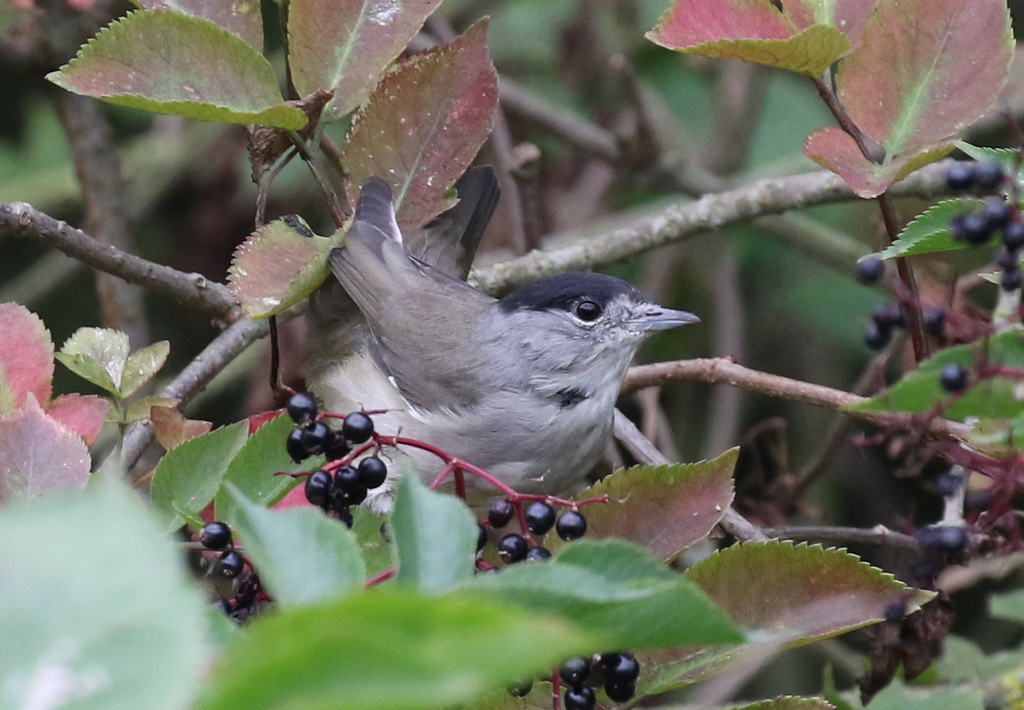
There was nothing visible in the paddocks from the gate at the end, but while we were scanning we spotted a large flock of Golden Plover flying over the hillside beyond. The birds split up into several smaller groups and one came in over the paddocks and headed out onto the reserve.
We made our way down past the visitor centre and out along the main path. Our first stop was at the reedbed pool. There were a couple of Little Grebes diving out towards the back and one or two Coot, but not many ducks on here today. We could hear Bearded Tits calling out in the reeds, but they were keeping their heads down given the wind. Two Greenshank flew in calling and circled round over the water looking for somewhere to land.
As we walked on, looking towards the Freshmarsh we could see five Spoonbills hiding at the back. We stopped for a quick look, because we knew they would not be visible from the hides. Approaching Island Hide, we heard a Water Rail squealing down in the reeds below the path and looked down to see it chase a Moorhen out onto the open mud. We watched the Water Rail picking its way in and out of the reeds. We could still see it on the edge of the reeds when we got into the hide.
Looking out across the mud, two juvenile Curlew Sandpipers were feeding on the edge of the water. They were joined by a single juvenile Dunlin, given a nice comparison alongside, the latter with black spotting on its belly, the Curlew Sandpipers a little larger and with slightly longer bills. There were more Curlew Sandpipers further over, all juveniles, taking us to five in total.
A much smaller wader over on the edge of the reeds below the main path was a juvenile Little Stint. It was loosely associating with a larger flock of around 40 Dunlin scattered over the mud on that side. All the small waders were very nervous and kept taking off and whirling round.
There are still lots of Ruff out on the Freshmarsh, with all the adults now in their dull grey-brown non-breeding plumage. We could see lots of Black-tailed Godwits too, but they were mostly feeding in the deeper water right in the back corner. There is still a scattering of Avocets here but numbers have dropped significantly from the highs of late summer, as birds have headed off for the winter.

Two geese on one of the islands were the resident Pink-footed Geese. They both have badly damaged wings, possibly having been shot, and were unable to make the journey to Iceland for the breeding season, but they seem to have survived quite happily here over the summer.
There are lots more ducks in now, as birds return for the winter – Teal, Shoveler, Wigeon, Gadwall – but they are mostly in their dull eclipse plumage at the moment. Most of the remaining Shelduck are juveniles, as the adults have gone off to moult.
From up on the main path, we had a much better view of the Little Stint. It was feeding on the mud just below, almost too close as it kept disappearing behind the reeds just below us! It was clearly much smaller than all the Dunlin, whiter below, with a short bill and two bright pale lines down the mantle.
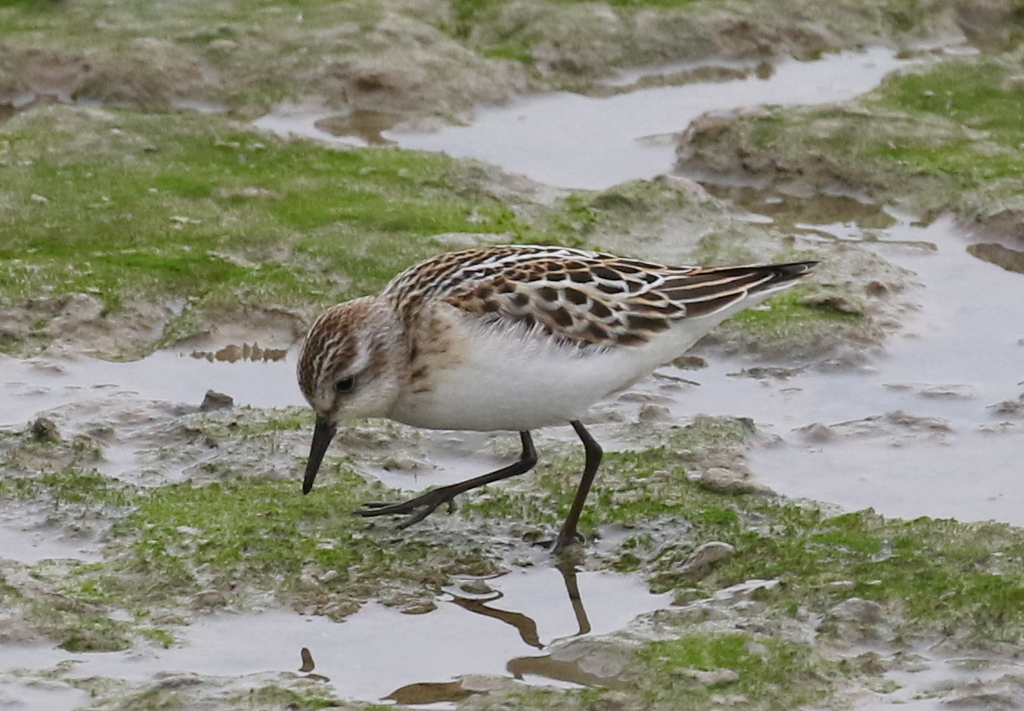
We had seen a single Curlew Sandpiper with the Dunlin here too, from the hide, but we couldn’t see it at first. Presumably it had been hiding behind the reeds too, as suddenly it appeared again just below the path. We got a great close look at that as well.
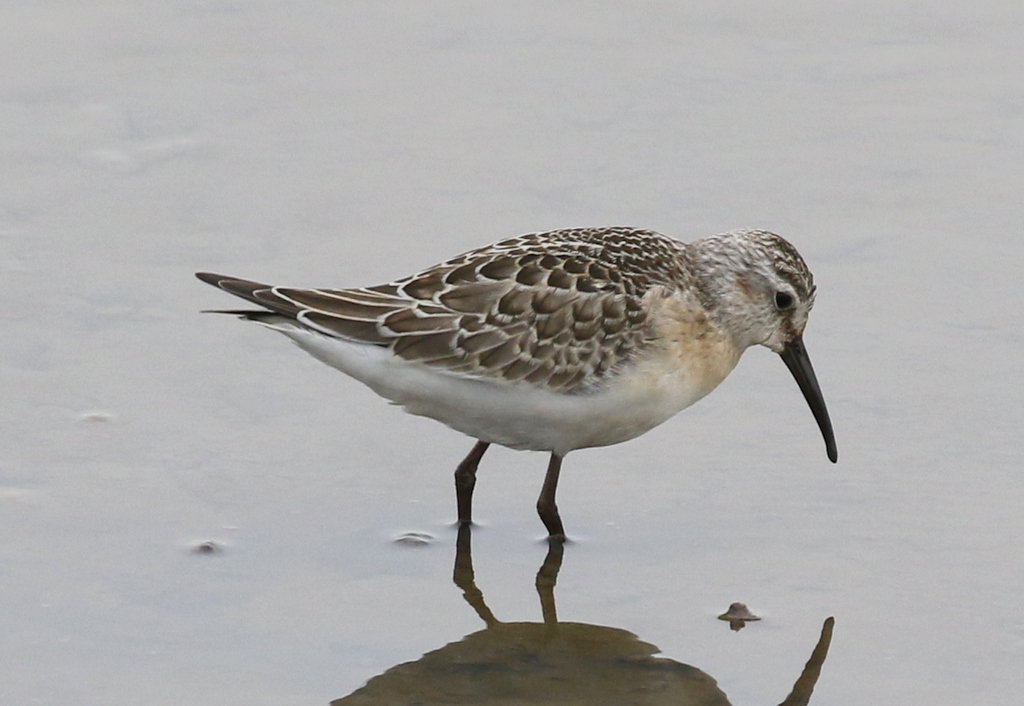
We were already doing well for waders here. Then a Common Snipe appeared out of the vegetation on the island between the path and Parrinder Hide and proceeded to probe its long bill vigorously in the mud. A single Knot flew in and landed on the far side of the same island, along the muddy shore.
Two Spoonbills flew up from the back of the Freshmarsh and flew straight towards us, before seeing all the people on the bank and veering away over the corner of Volunteer Marsh. Just as they flew off, another three Spoonbills flew in from behind us, from out over Thornham saltmarsh. They flew straight past us, giving us great close-up flight views.
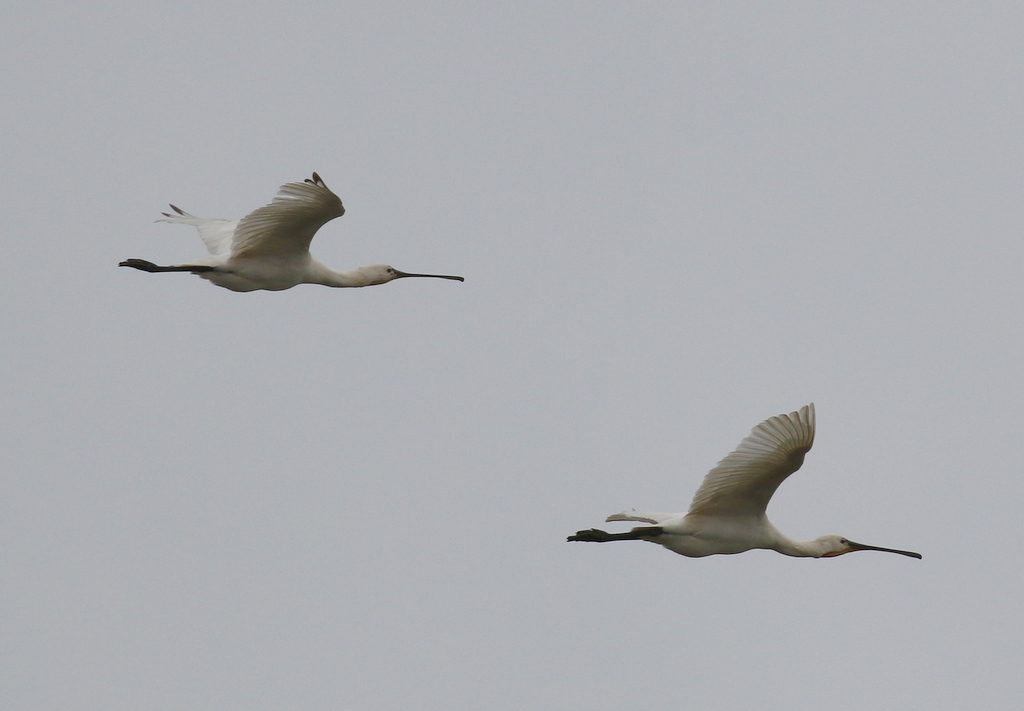
While we were watching all the comings and goings on the Freshmarsh, we heard Bearded Tits calling below us in the reeds. We looked down to see a small bird with a long tail dart across over the water in the corner. We had a couple more glimpses of them, but they were keeping hidden, out of the wind today. We did get better views of one or two Reed Warblers which were also flitting around low down along the edge of the reeds and a Reed Bunting which perched up more obligingly.
When we got to Parrinder Hide, we had a quick look from outside the hide first. We were instantly rewarded with two Spotted Redshanks, roosting at the back of the Freshmarsh with some Black-tailed Godwits. We got the Spotted Redshanks in the scope, first an adult in silvery-grey and white winter plumage and then a much duskier moulting juvenile. We could see their long and needle fine bills, very different from a Common Redshank.
As we scanned the Freshmarsh from inside the hide, a Common Sandpiper flew across in front of us, calling, and landed on the muddy edge out to one side. Further back, we could see a juvenile Little Ringed Plover on the mud too. It ran out along the edge of the island, where it was joined by a second Little Ringed Plover, also a juvenile. The two of them were then chased off by two Ringed Plovers, which at least gave us a great opportunity to compare the two species!
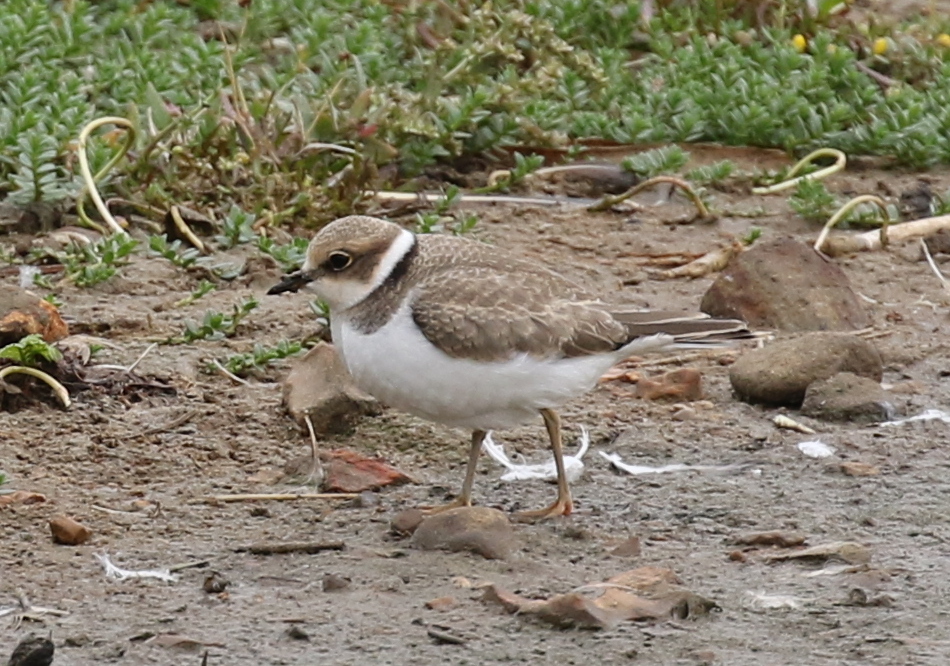
A quick look out from the other side of Parrinder Hide produced a smart Grey Plover still in breeding plumage, and several Curlew and Common Redshank. Back on the main path, there were more waders along the muddy channel at the far end of Volunteer Marsh – lots more Redshank, and Black-tailed Godwits, and two more Grey Plover, this time mostly in non-breeding attire.
The Tidal Pools were rather quiet today, so we made our way straight out to the beach. The tide was out now and there were lots of waders down on the mussel beds. Bar-tailed Godwit was a particularly target and we spotted some down on the beach, so we walked down for a closer look. There were 4-5 Bar-tailed Godwits out on the sand and several with the more numerous Black-tailed Godwits on the mussel beds, including one still sporting rather rusty underpart, the remnants of its breeding plumage.
A single Whimbrel was feeding with all the Curlew on the mussel beds. Through the scope, we could see its short bill and striped crown. There were several Turnstones, very well camouflaged against the dark mud and shellfish, and a few more Knot too.
A Sanderling flew in along the beach but landed out of view. We walked further down to try to see where it had landed, but when we got there we couldn’t find it. At that point, all the waders suddenly started to take off and we looked up to see a juvenile Peregrine buzzing the birds on the beach before following the flocks out over the sea. All the waders flushed and flocks of Knot and Oystercatchers came right past us.

The Peregrine turned and came in again, low over the waves. This time it had lost the benefit of surprise and it didn’t look like catching anything. It drifted away towards Brancaster.
We looked out over the sea and saw another dark bird low over the waves. This time it was an Arctic Skua. It had seen a Sandwich Tern flying past, and was heading straight for it, hoping to steal its lunch! The Arctic Skua chased the Tern for a few seconds, the two of them twisting and turning in a dogfight, before it seemed to lose interest and flew off. A little late, a second Arctic Skua flew past us. Then a Mediterranean Gull flew past along the shoreline, a young bird, in its first winter. It was all action down at the beach!
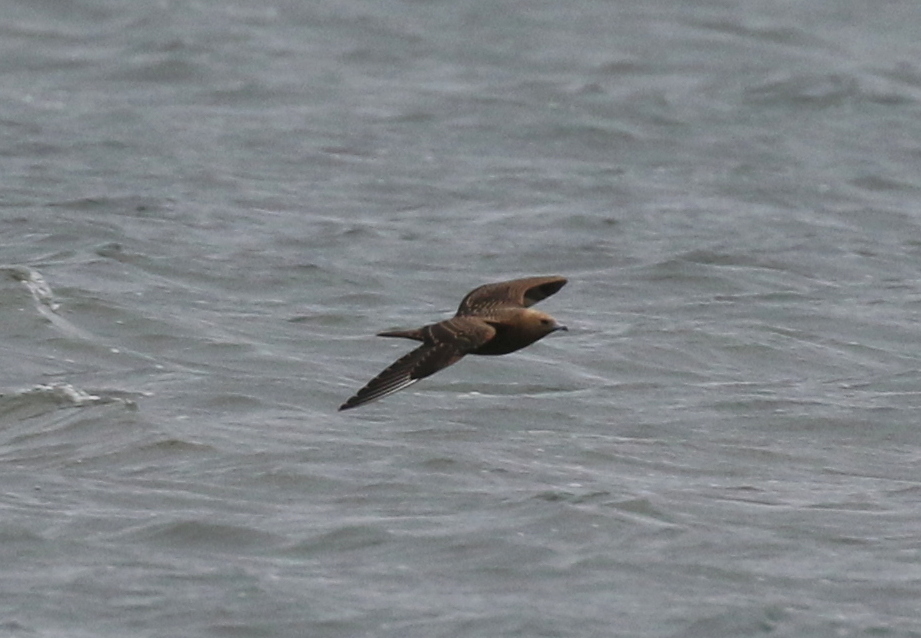
It was time to start thinking about heading back for lunch, so we walked back up the beach. We spotted a Marsh Harrier drifting inland over the Tidal Pools, the first we had seen this morning. From the top of the beach, we could see another two Marsh Harriers coming in off the sea. They looked like they might be migrants from the continent arriving for the winter, but one of them was a juvenile bearing green wing tags. It had been ringed at Holkham a few months earlier, so that individual was certainly a local bird.
A Little Egret battling its way in over the sea from further out presumably was a migrant arriving, as was a single Pintail flying west offshore. Two drake Common Scoters were out on the sea.
We had been distracted with all the activity, and we were now starting to get hungry, so we made our way back. We stopped briefly to watch a Little Egret fishing on Volunteer Marsh, where the water was still slowing out of the channel. A Cetti’s Warbler was singing in the reedbed as we passed, but well hidden from view as ever.
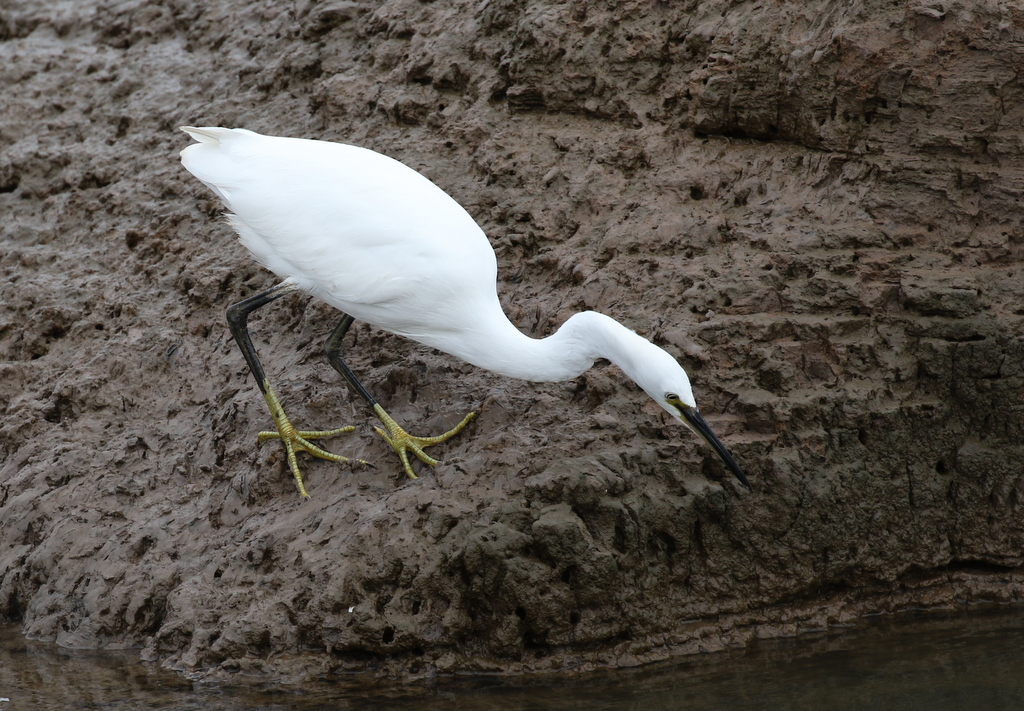
After lunch, we headed out along Fen Trail. Just past the Visitor Centre, we came across a flock of Long-tailed Tits in the sallows. We stopped to watch for a minute or so, and found various other birds with them – Blue Tits and Great Tits, several Chiffchaff and a Goldcrest.
We stopped at the gate on the Tank Road to scan the paddocks. There was nothing out on the grass but we could see two doves on the roof of one of the stables – two Turtle Doves. Through the scope, we could see their pink-washed breasts, black and white-striped neck patches and, as they turned, their rusty fringed upperparts.
Patsy’ Reedbed is a great place for ducks at the moment. As well as all the commonr dabbling ducks we had seen earlier on the Freshmarsh, there were several Common Pochard and Tufted Ducks here. Two female Red-crested Pochard were upending out in the middle.
The Great White Egret we were told was hiding in the reeds, but it wasn’t long before it strode out into the middle, where we got a great look at it. It flew round a couple of times too, so we could really appreciate its large size.
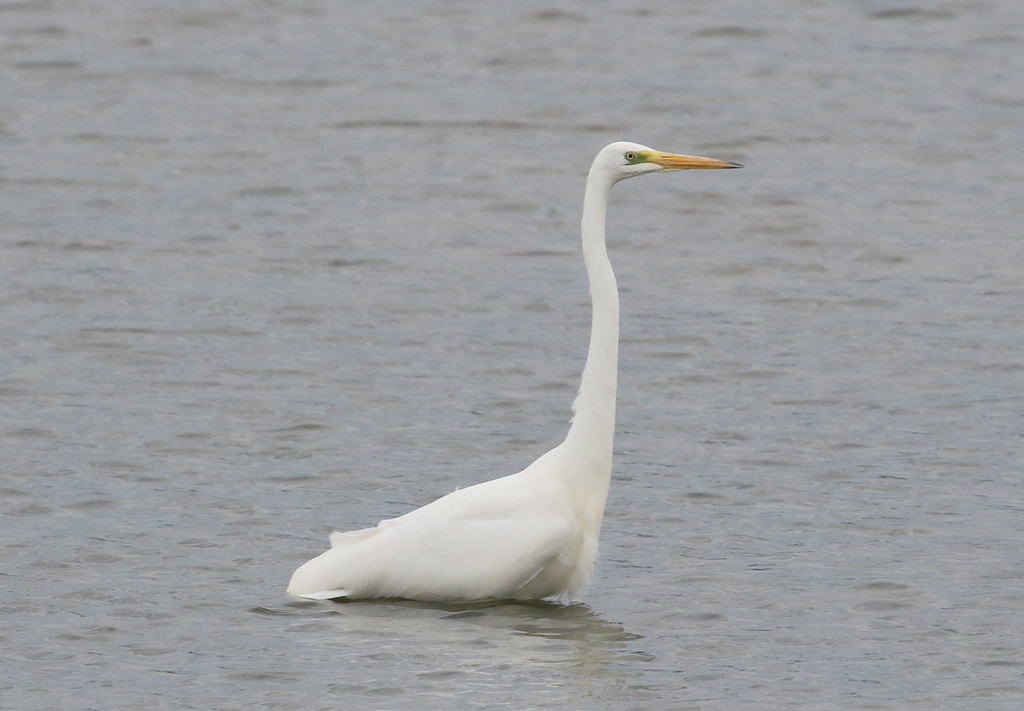
Continuing on along East Trail, a large flock of House Martins were hawking for insects over the edge of Patsy’s Reedbed. In with them, we found one or two Sand Martins as well, browner backed and lacking the white rump of the House Martins. The Turtle Doves were now down in the paddocks, around one of the water troughs, and had drawn a small crowd of admirers.
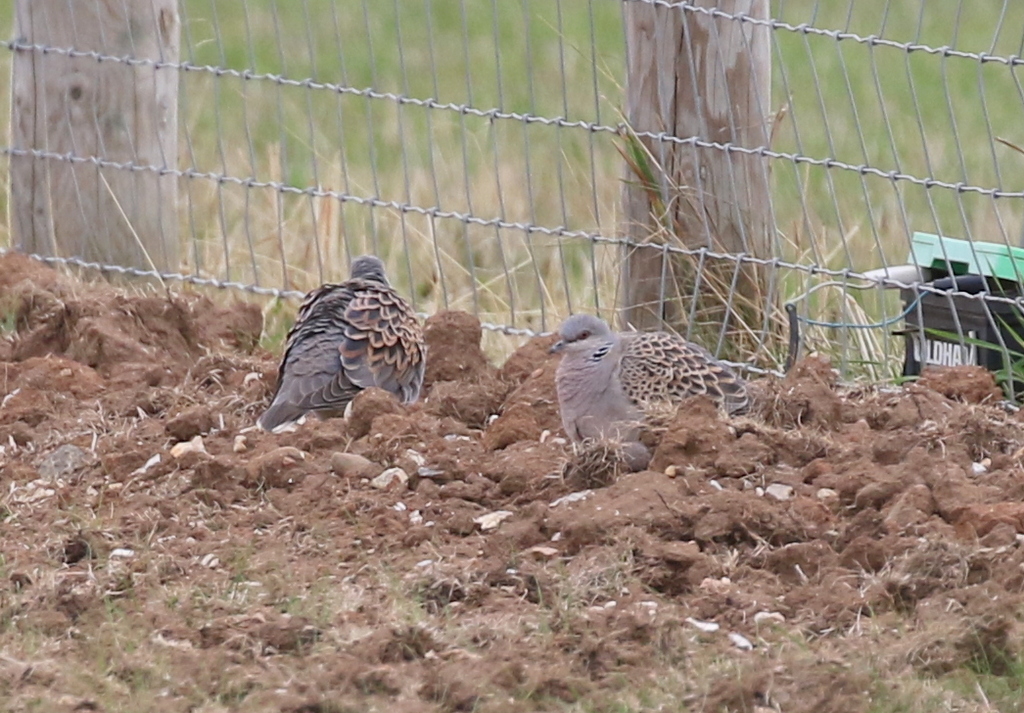
We had a quick look up along the Autumn Trail to the end. We could hear more Bearded Tits calling but once again they refused to show themselves. There were several browner juvenile Ruffs in the far corner of the Freshmarsh too. Then we made our way quickly back to the car.
By the time we got to Holme, the clouds had darkened and the wind had picked up. A Stock Dove was feeding in the grass in the fields by the track. We walked along the coast path behind the paddocks, but the bushes here were very quiet today, apart from a few House Sparrows. It seemed like there had been a clear-out of our summer warblers over the last day or so and no migrants fresh in.
The dunes the other side were quiet at first two, not helped by several dogs running around on the loose. We eventually managed to find a group of three juvenile Stonechats, accompanied by a Common Whitethroat. A Common Buzzard was perched on some brambles out in the middle of the grazing marsh.
With a lack of small birds in the bushes, we decided not to press on further. On our way back, we stopped to have a look at the Beach. A family of five Common Terns were out on the sand, in the distance. Scanning through the waders on the beach, as well as the species we had seen at Titchwell, we managed to find a group of Sanderlings to make up for the elusive one earlier. A Gannet drifted past in the distance offshore.
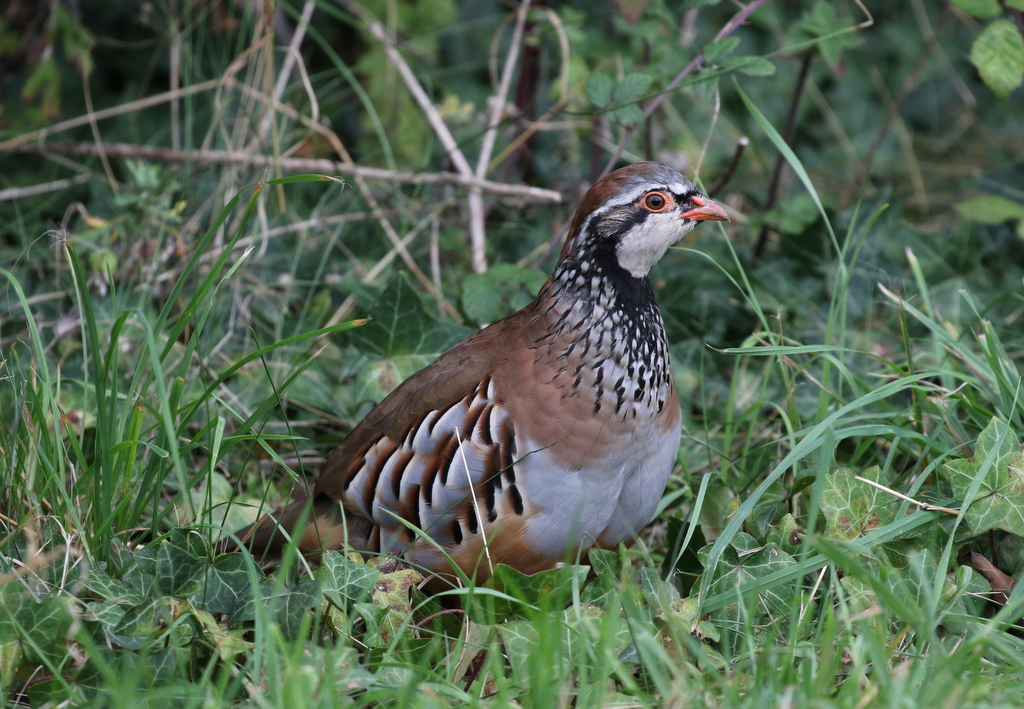
It was time to be heading home, but we made our way back via the smaller roads inland. We had hoped to find a few farmland birds, but the bushes were quiet in the wind. A Red-legged Partridge posed nicely for the cameras on the verge, and we found one field over which a large flock Swallows was hawking for insects.
When we looked at the total for the day, we found we had seen or heard 99 species, including 23 different types of wader. Not a bad start – lets see how many more we can find tomorrow!
















